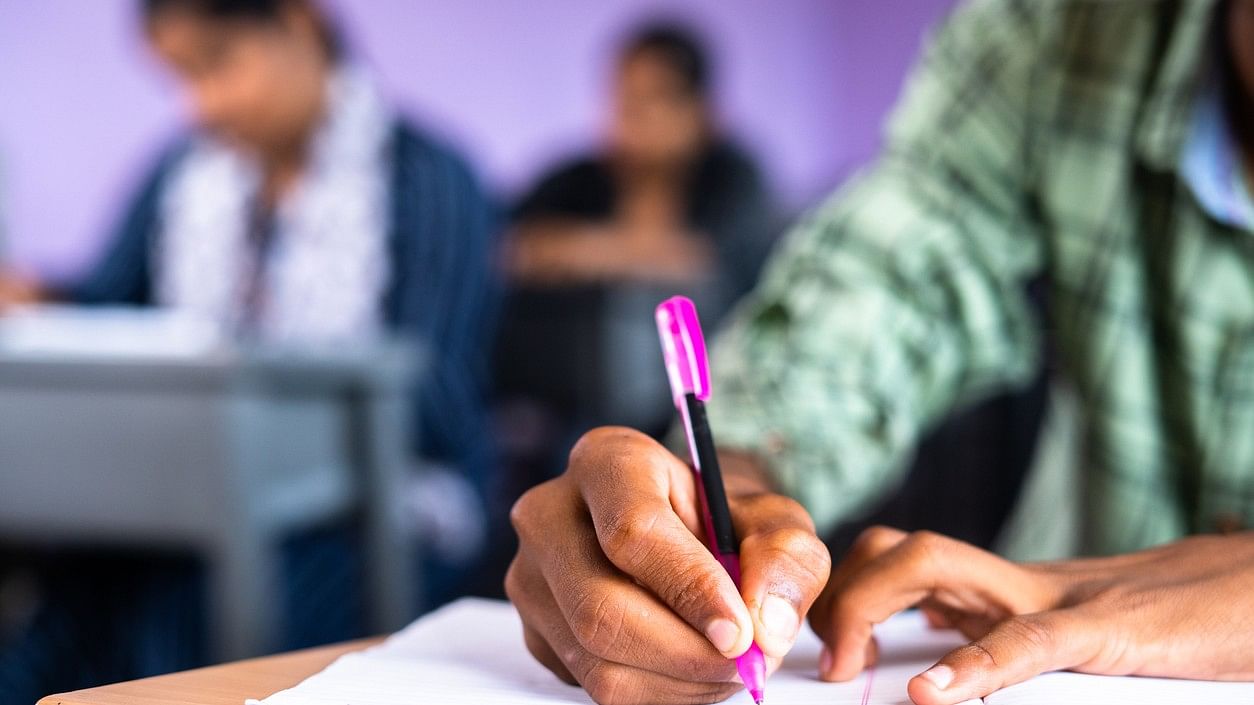
Representative image showing Indian school students.
Credit: iStock Photo
Do edifices endure if foundations are wobbly? If at all they do, in what sort of condition do they survive?
We are compelled to rethink and revisit these issues every time the Annual Status of Education Report (ASER), or any other account about India’s school education, is released. The ASER 2023: Beyond Basics, facilitated by PRATHAM among rural students in India aged 14 to 18 years, is not just disturbing but calls for intense soul-searching as regards India’s initiatives in the early education realm. This is important as a predominant population of India is rural (about 65 per cent), and needless to emphasise, a majority of our 14–18-year-olds dwell in rural areas. The ASER offers ‘a glimpse into the educational landscape and learning outcomes of children in rural India’.
The field-level household survey data obtained from 28 districts across 26 states evaluated the basic arithmetic skills and reading abilities of 34,745 students. While a single district was surveyed in each of the 24 States, Uttar Pradesh and Madhya Pradesh contributed two districts each. Of the 34,745 students, it was found that more than 50 per cent could not handle basic mathematics; that is, they could not come to grips with what was to have been learnt in the third and fourth standards. Besides, about 25 per cent could not read a second standard text in their mother tongues.
Boys seem to have fared slightly better than girls in mathematics and English reading. This does not augur well as regards our educational set-up as quite a few extra steps have been initiated in the highly proclaimed ‘Beti Bachao, Beti Padhao’ (Save the Daughter, Educate the Daughter) scheme, a joint initiative of four ministries of the Government of India. A possible reason for this lag could be that the teacher-expectation of the girl students is relatively low, as has been empirically observed in many instances, and that does affect the performance of the girls and their overall learning outcome.
Despite the universal primary education initiative that is supposed to be in place, the overall enrolment of students among 14-18-year-olds is 86.8 per cent. So, we already have a deficit of 13.2 per cent in this age group which is not in schools. By the time the children are 18 years 32.6 per cent are not in schools. These ‘missing from schools’ children are also an issue when we see that the performance of those who are in schools is alarmingly pathetic as exemplified by the fact that around 45 per cent could not simply calculate the number of hours they slept from the time they went to bed and the time they woke up. Here we are not talking about toddlers but 14-to-18-year-olds!
Whether they continue in school/college beyond 18 years or drop out, pray where do they fit in. And (who or) what kind of accountability can we think of in this miserable scenario and the future of India’s educational system? We also, must go back and look at what is happening in our schools from the kindergarten stage till the age of 14 as the students the report has dealt with are those who have undoubtedly passed through the echelons of the primary school structures and have been gradually pushed up. Can we hold our examination systems responsible for this mess to drive students through successive such exercises, or the malady is much deeper and something that has afflicted the entire early schooling enterprises altogether?
The ASER data ‘suggests that around a quarter of youth in the 14-18 age range may benefit from initiatives focused on building foundational literacy and numeracy skills’ That is at one level encouraging, but is also disturbing as just 25 per cent, it says, may gain through focused initiatives. So, what happens to the rest of the 75 per cent? What would be their predicament?
The exalted proclamation of the 2020 National Education Policy was to ‘achieve universal foundational literacy and numeracy in primary school by 2025’. Given that we are already in 2024 that aim seems quite far-fetched, and we are falling woefully short of the intended targets. There is no way in which the goalposts can be shifted to achieve the desired results, even if such a possibility existed.
It is hard to perceive and predict how a particular entity — the tuition/coaching industry — not only has permeated the rural areas but seems to spread going by the fact that it has grown from 25 per cent in 2018 to 30 per cent in 2022, is likely to impact the educational system in the rural areas. These private initiatives may not be akin to what is obtained today in urban locales and are, in the main, exercises that individual teachers undertake for students from their schools, despite the fact that they are not expected to do so legally, and morally too.
Sadly, the only positive and successful endeavour as regards the school education efforts seems to be the fact that the enrolment numbers have gone up. Besides that, there is hardly anything to cheer about in this realm and there are no rainbows on the horizon.
Disclaimer: The views expressed above are the author's own. They do not necessarily reflect the views of DH.
(M A Kalam, a social anthropologist, is former Dean and Professor of Anthropology, Krea University.)